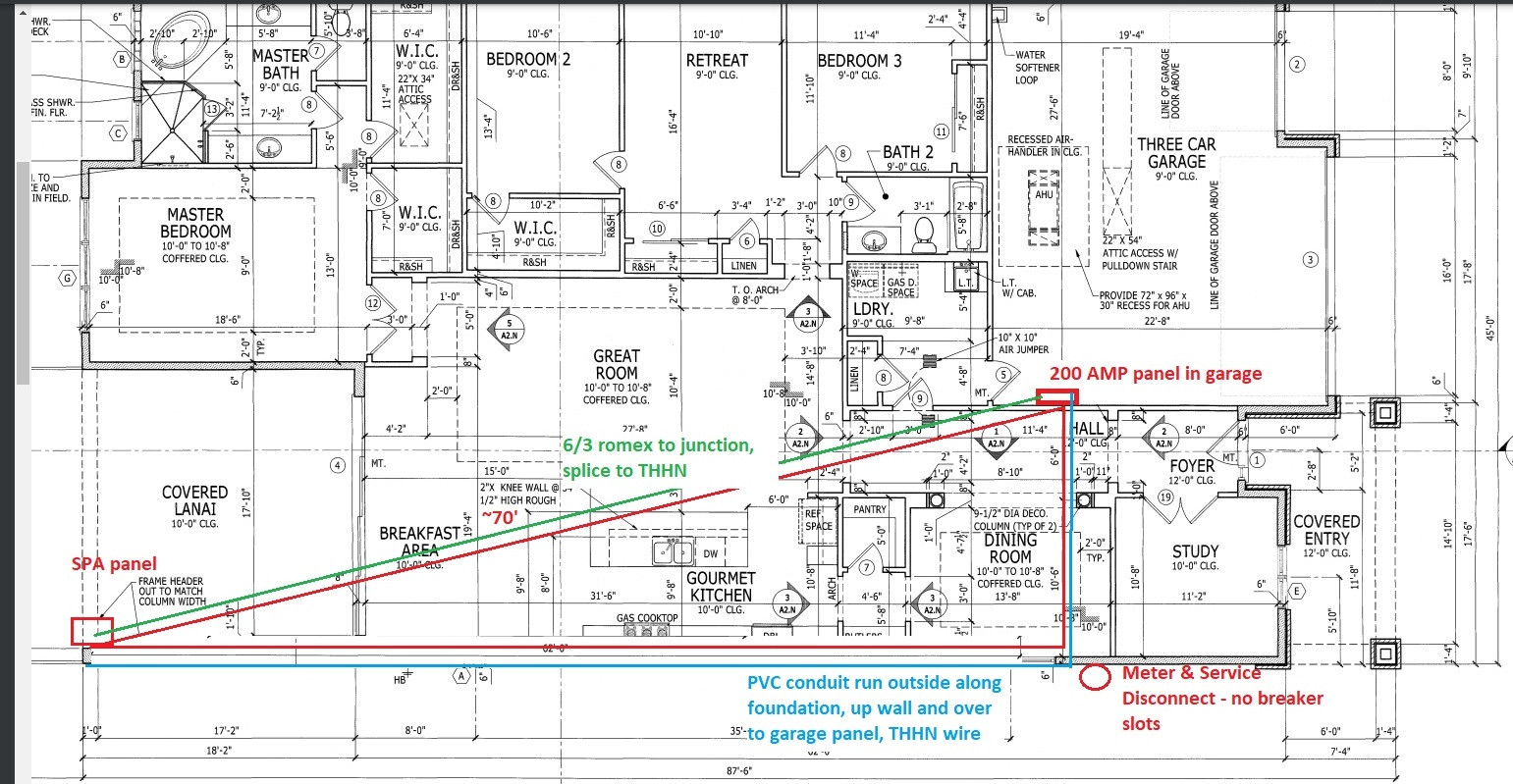We are moving our Spa (50 AMP 240v) to our new home. Currently it is wired to a spa panel via PVC conduit to an extra breaker in the meter combo as there was room for a breaker. The new home has a similar meter combo but this Eaton unit has no extra breaker. It is a 200 Amp main. The main panel is in the finished garage in a wall bump out, about 18' from the service entrance. Here are the two options I've come up with, any better options? Home is in North Florida.
6/3 Romex from the panel in the garage through the attic to a suitable junction box. THHN wire run through PVC conduit down to the Spa panel, also 6 AWG.
Same as above but conduit from main panel, no junction box. All THHN wire.
Run one of the two above options from the main back to the outside wall where the meter is, down the wall to the foundation with the conduit running along the foundation only a few inches under the soil/mulch.

